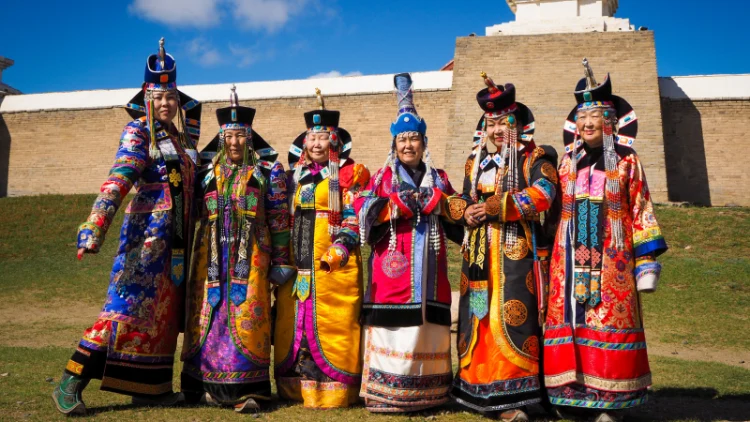Ladakh, often referred to as the “Land of High Passes,” is not just known for its stunning landscapes but also for its rich and vibrant culture. The Ladakhi culture is a unique blend of Tibetan, Indian, and Central Asian influences, making it a fascinating destination for cultural enthusiasts. If you’re planning to visit Ladakh in 2025, this guide will cover everything you need to know—traditions, festivals, lifestyle, and essential tips for immersing yourself in the local culture.
Introduction to Ladakhi Culture
Ladakh’s culture is deeply rooted in Buddhism, with a significant influence from Tibetan traditions. The region’s isolation due to its rugged terrain has helped preserve its unique cultural heritage. From ancient monasteries to vibrant festivals, Ladakh offers a rich cultural experience that is both enlightening and inspiring.
Traditions and Customs
Ladakhi traditions and customs are an integral part of daily life. Here are some key aspects:
1. Buddhism
- Monasteries: Ladakh is home to numerous ancient monasteries, such as Hemis, Thiksey, and Diskit, which are centers of spiritual and cultural life.
- Prayer Flags: Colorful prayer flags can be seen fluttering in the wind, symbolizing peace, compassion, and wisdom.
- Mani Walls: Stone walls inscribed with Buddhist prayers and mantras are common along trails and roads.
2. Traditional Clothing
- Goncha: A traditional robe worn by both men and women, often made of wool to protect against the cold.
- Perak: A traditional headdress worn by women, adorned with turquoise and other precious stones.
3. Hospitality
- Local Etiquette: Ladakhis are known for their warm hospitality. It’s customary to greet locals with a smile and a respectful “Juley” (hello).
- Tea Culture: Butter tea (gur-gur cha) is a staple in Ladakhi households and is often offered to guests.
Festivals in Ladakh
Ladakh’s festivals are a vibrant display of its cultural heritage. Here are some must-see festivals in 2025:
1. Hemis Festival
- When: June or July
- Where: Hemis Monastery
- Highlights: Mask dances, traditional music, and vibrant costumes.
2. Losar Festival
- When: February or March
- Where: Throughout Ladakh
- Highlights: Celebrations mark the Tibetan New Year with traditional dances, music, and feasts.
3. Ladakh Festival
- When: September
- Where: Leh and surrounding areas
- Highlights: Cultural performances, traditional sports, and local handicrafts.
4. Sindhu Darshan Festival
- When: June
- Where: Sindhu Ghat, Leh
- Highlights: Celebrates the Indus River with cultural programs and rituals.
Lifestyle in Ladakh
The lifestyle in Ladakh is closely tied to its harsh environment and Buddhist traditions. Here are some key aspects:
1. Agriculture
- Crops: Barley, wheat, and vegetables are the main crops grown in Ladakh.
- Irrigation: Traditional irrigation systems, such as zings (water channels), are used to water the fields.
2. Nomadic Life
- Changpas: The Changpa nomads of Ladakh rear livestock, such as yaks and goats, and produce high-quality Pashmina wool.
- Migration: Nomads migrate with their herds to higher pastures during the summer months.
3. Art and Craft
- Thangkas: Intricate Buddhist paintings on cloth, often depicting deities and mandalas.
- Handicrafts: Local artisans produce beautiful handicrafts, such as pottery, jewelry, and carpets.
Essential Tips for Experiencing Ladakhi Culture
Here are some tips to help you immerse yourself in Ladakhi culture:
1. Respect Local Customs
- Do: Dress modestly and remove your shoes before entering monasteries.
- Don’t: Take photographs without permission, especially in religious sites.
2. Participate in Festivals
- Do: Attend local festivals to experience the vibrant culture and traditions.
- Don’t: Disrupt the ceremonies or disrespect the participants.
3. Learn Basic Phrases
- Do: Learn basic Ladakhi phrases, such as “Juley” (hello) and “Thuk je che” (thank you).
- Don’t: Assume that everyone speaks English or Hindi.
4. Support Local Artisans
- Do: Purchase handicrafts and souvenirs from local artisans.
- Don’t: Haggle excessively; respect the value of their work.
Sample Itinerary for a Cultural Trip to Ladakh
Here’s a 7-day itinerary that focuses on experiencing Ladakhi culture:
Day 1: Arrival in Leh
- Arrive in Leh and acclimatize to the high altitude.
- Explore Leh city and visit local markets.
Day 2: Leh Local Sightseeing
- Visit Shanti Stupa, Leh Palace, and local markets.
- Acclimatize to the high altitude.
Day 3: Leh to Hemis Monastery
- Drive to Hemis Monastery and attend the Hemis Festival (if visiting in June or July).
- Return to Leh by evening.
Day 4: Leh to Nubra Valley
- Ride to Nubra Valley via Khardung La Pass.
- Explore the sand dunes and double-humped camels.
- Overnight stay in Nubra Valley.
Day 5: Nubra Valley to Tso Moriri Lake
- Ride to Tso Moriri Lake via Shyok Valley.
- Enjoy the serene ambiance and return to Leh by evening.
Day 6: Leh Local Sightseeing
- Visit Namgyal Tsemo Monastery and local markets.
- Acclimatize to the high altitude.
Day 7: Departure from Leh
- Depart from Leh with unforgettable memories.
Personal Experience
During my trip to Ladakh, I was amazed by the rich cultural heritage of the region. The Hemis Festival was a highlight, with its vibrant mask dances and traditional music. I stayed at a guesthouse in Leh and enjoyed the warm hospitality of the locals. My advice is to plan your trip well and take the time to immerse yourself in the local culture.
Conclusion
Ladakh is a destination that will leave you spellbound. Whether you’re exploring ancient monasteries, attending vibrant festivals, or experiencing the local lifestyle, Ladakh offers an unforgettable cultural journey. Plan your trip well, follow these tips, and get ready for an amazing adventure in 2025!

